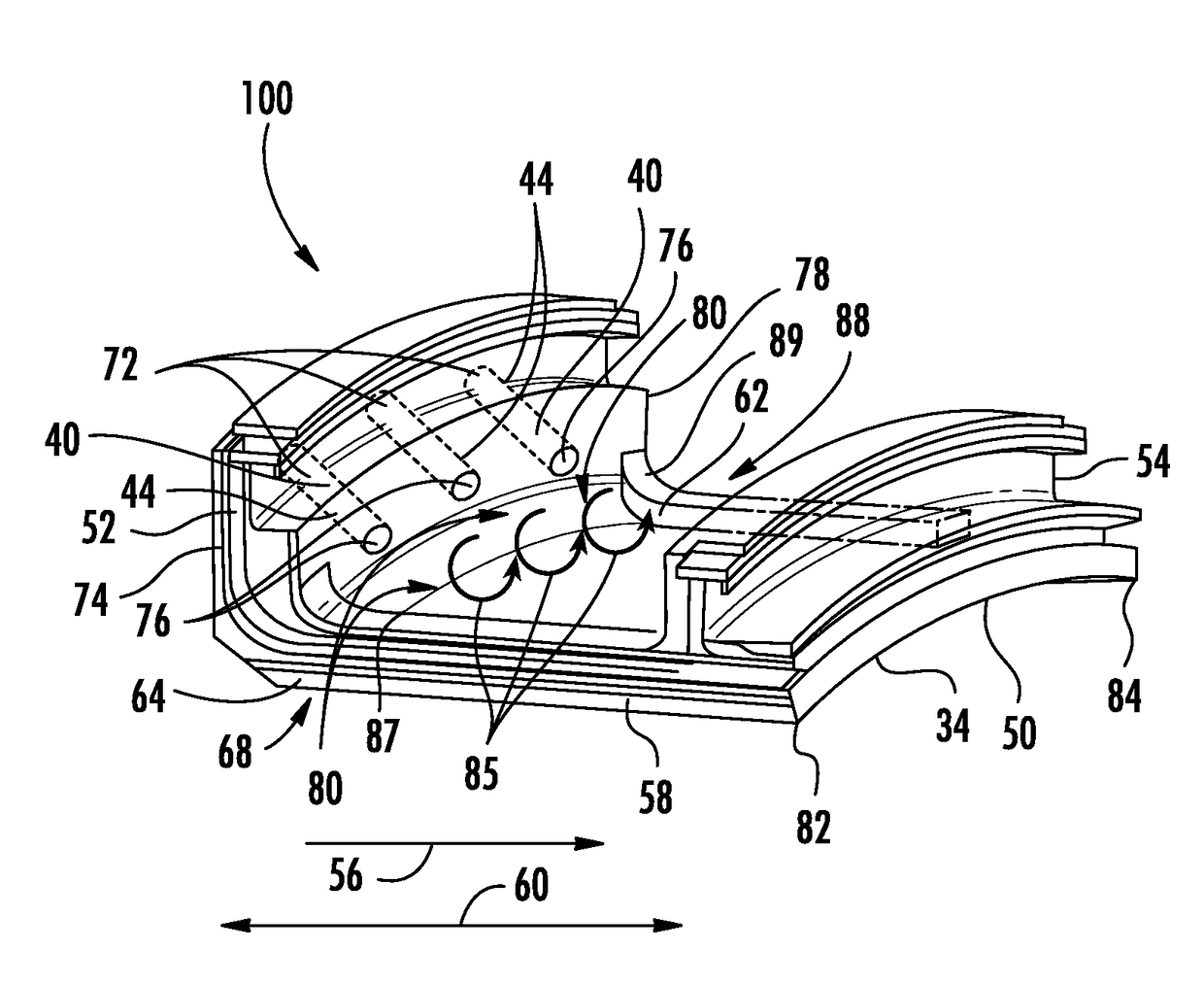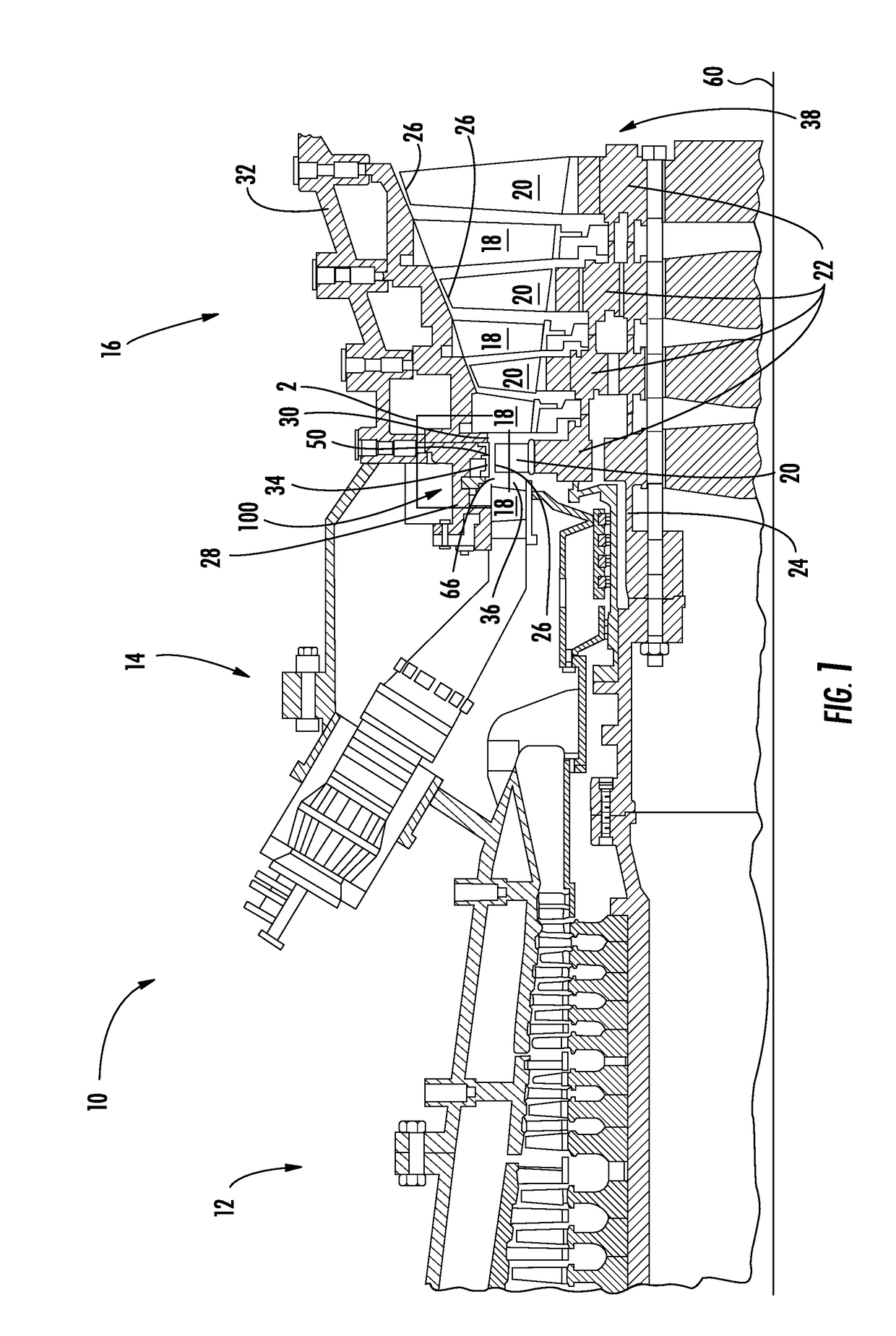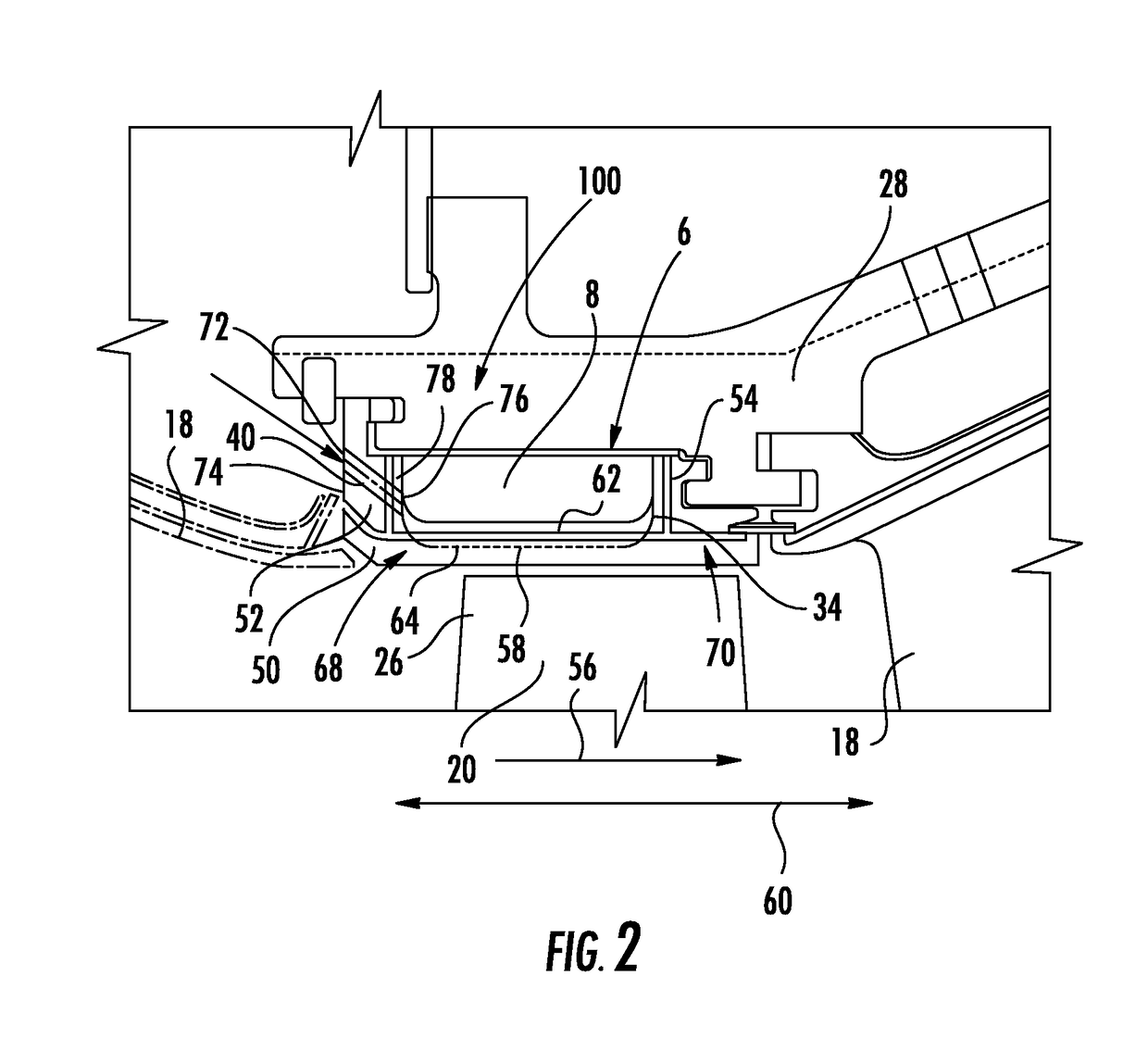Shroud cooling system for shrouds adjacent to airfoils within gas turbine engines
a technology of shrouds and airfoils, which is applied in the direction of engine fuction, leakage prevention, machines/engines, etc., can solve the problems of blade tip clearances that cannot be eliminated, blade tip clearances that can actually decrease, and loss in flow paths, so as to increase cooling efficiency, slow down the thermal response, and enhance cooling
- Summary
- Abstract
- Description
- Claims
- Application Information
AI Technical Summary
Benefits of technology
Problems solved by technology
Method used
Image
Examples
Embodiment Construction
[0014]As shown in FIGS. 1-12, a shroud cooling system 100 configured to cool the shroud 50 adjacent to an airfoil 20 within a gas turbine engine 10 is disclosed. The turbine engine shroud 50 may be formed from shroud segments 34 that include a plurality of cooling air supply channels 40 extending through a forward shroud support 52 for impingement of cooling air onto an outer radial surface 62, commonly called the backside surface 62, of the shroud segment 34 with respect to the inner turbine section 36 of the turbine engine 10. The channels 40 may extend at various angles to increase cooling efficiency. The backside surface 62 may also include various cooling enhancement components 110 configured to assist in directing, dispersing, concentrating, or distributing cooling air impinged thereon from the channels 40 to provide enhanced cooling at the backside surface 62. The present embodiments may be used to slow down the thermal response by isolating a turbine vane carrier 28 from the...
PUM
 Login to View More
Login to View More Abstract
Description
Claims
Application Information
 Login to View More
Login to View More - R&D
- Intellectual Property
- Life Sciences
- Materials
- Tech Scout
- Unparalleled Data Quality
- Higher Quality Content
- 60% Fewer Hallucinations
Browse by: Latest US Patents, China's latest patents, Technical Efficacy Thesaurus, Application Domain, Technology Topic, Popular Technical Reports.
© 2025 PatSnap. All rights reserved.Legal|Privacy policy|Modern Slavery Act Transparency Statement|Sitemap|About US| Contact US: help@patsnap.com



